Sri Lanka, an island nation known for its rich cultural tapestry and biodiversity, is celebrated for its extensive tea plantations. The verdant hills and cool climes of the country’s central highlands provide the perfect conditions for growing Camellia sinensis, the plant from which all tea is made. Wandering through the tea trails of Sri Lanka is a journey across the picturesque landscapes and a passage through time and tradition. These trails offer a captivating glimpse into the country’s colonial past, the evolution of tea production, and the lives of the communities dedicated to cultivating this cherished crop.
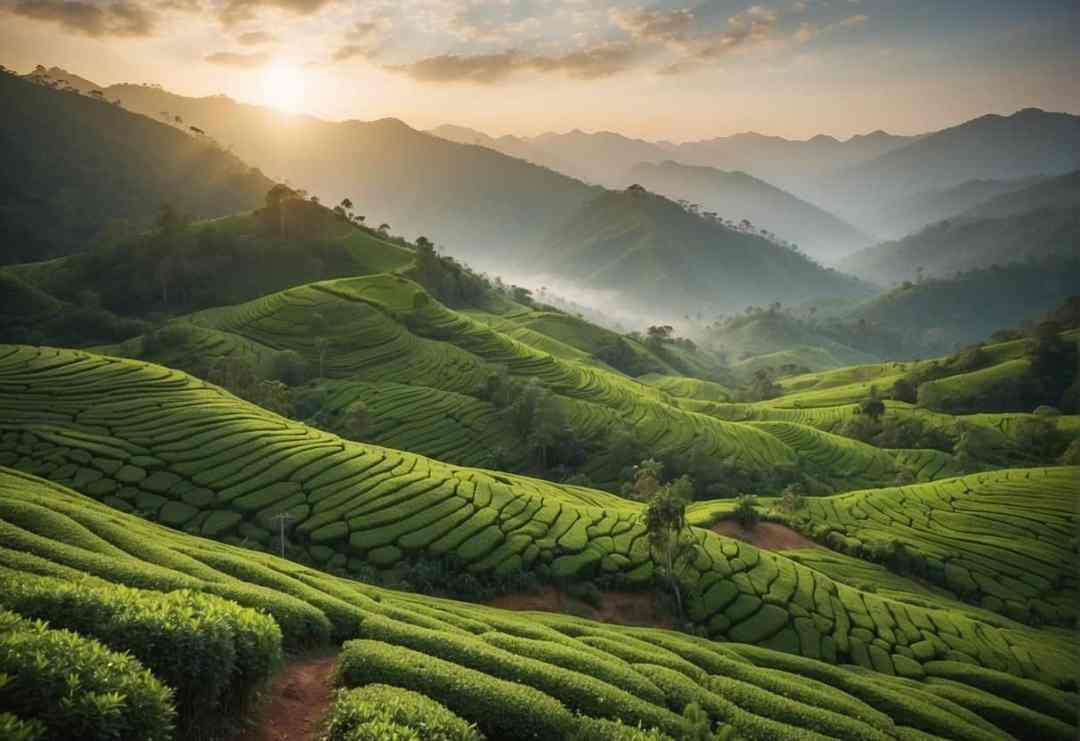
The history of tea in Sri Lanka is as rich as its flavour, having been introduced to the country in the 19th century by the British. The transformation from coffee plantations to tea estates reshaped the country’s agricultural landscape and played a central role in its economy. As visitors embark on a sojourn through the winding tea trails, they are exposed to the diverse varieties of tea grown in the region, each with its distinct aroma and character, shaped by the growing regions’ varying altitudes and climate conditions. The experience deepens one’s appreciation for the cultural significance of tea in Sri Lanka, which is interwoven with the everyday lives of its people.
Along the tea trails, travellers witness the intricate process of tea production—from the careful handpicking of leaves to the methodical techniques of withering, rolling, fermenting, and drying. This journey sheds light on the country’s commitment to sustainable practices and conservation efforts, ensuring that the tea industry remains environmentally responsible while producing some of the world’s finest teas. Discovering the tea plantations of Sri Lanka provides an intimate look at the nation’s heritage, a sensory exploration of its teas, and valuable insights into the art of tea cultivation and enjoyment.
Key Takeaways: (Sri Lanka Tea)
- Sri Lanka’s tea trails offer a look into tea’s cultural and historical significance within the nation.
- The diverse tea varieties and their unique characteristics are influenced by Sri Lanka’s different climatic regions.
- The journey affords insights into sustainable tea farming and the comprehensive tea production process.
History of Sri Lanka Tea
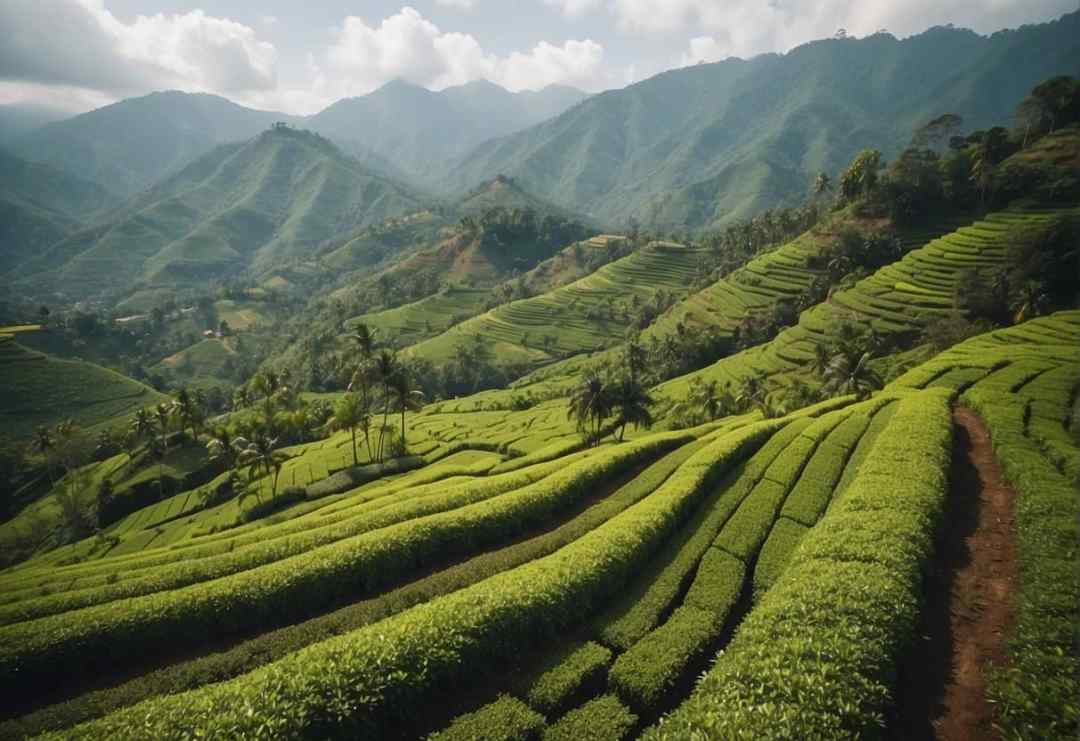
The history of tea in Sri Lanka is marked by colonial enterprises and swift transformation into one of the world’s most important tea producers. This change vastly influenced the island’s economy, landscape, and global standing.
Origins and British Colonization
The origins of tea in Sri Lanka trace back to the British colonial period. In 1824, the British brought a tea plant from China to Ceylon, now known as Sri Lanka, and planted it in the Royal Botanical Gardens in Peradeniya for non-commercial purposes. However, it was not until 1867 that James Taylor, a Scottish planter, established the first commercial tea plantation in the Loolecondera estate in Kandy. Taylor’s success prompted a shift from the traditional coffee plantations, decimated by a coffee rust disease, to tea cultivation.
Evolution of Tea Plantations
The transition to tea from coffee plantations was swift and transformative. By the late 19th century, the expansion of tea estates had reshaped the highlands of Sri Lanka. The colonial government instituted a systematic transportation and ownership infrastructure to support the burgeoning industry. Factories were built on plantations to process the tea, and the Ceylon Tea Traders Association was formed in 1894. The Tea Research Institute was established in 1925 to innovate and improve tea cultivation and processing in Ceylon.
Ceylon Tea (Sri Lanka Tea) and Its Global Influence
Ceylon tea became known worldwide for its high quality. By 1965, Sri Lanka was the world’s largest exporter of tea. The renaming to “Ceylon tea” was strategic, creating a brand recognized for its bright, full-bodied flavour. The tea industry plays a crucial role in the country’s economy, and the “Lion Logo”, synonymous with Ceylon tea, denotes that the tea was produced, packed, and shipped from Sri Lanka, assuring its authenticity and contributing to a longstanding global influence.
Types of Tea and Growing Regions
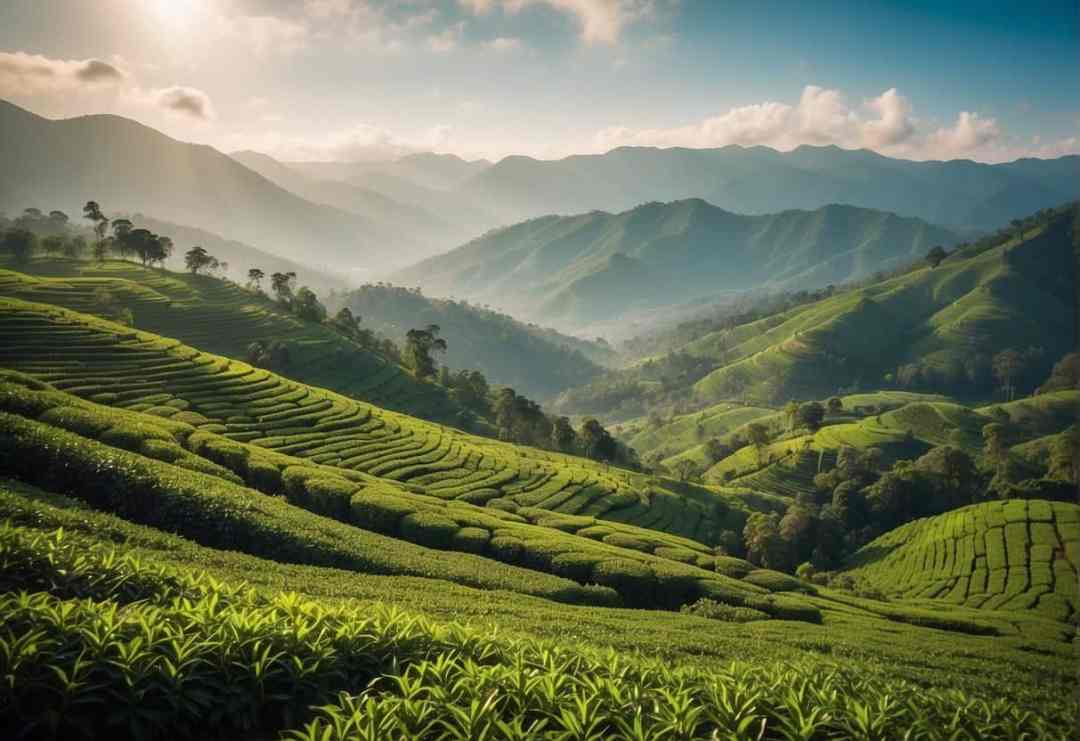
Sri Lanka’s tea production landscape is characterized by its diverse growing regions, each offering distinct flavours and qualities. Specific altitudes, climates, and soil types significantly influence the tea’s characteristics.
Nuwara Eliya: High-Grown Teas
In Nuwara Eliya, teas are grown at elevations of over 6,000 feet. The cool climate results in a slow growth rate, enhancing the flavour profile. The teas are noted for their delicate, floral characters and are often termed “the champagne of Ceylon teas.”
Uva Province: The Unique Seasonal Flushes
The Uva province is revered for its seasonal flushes due to the dry and cold climate conditions unique to the region. These teas have a distinctive, mellow flavour that peaks during the Uva season from July to September.
Dimbula: The Heart of Ceylon Tea Production
Dimbula region’s teas are grown at elevations ranging from 3,500 to 5,000 feet. The westerly monsoon rains contribute to the characteristic full-bodied and brisk taste, often with a subtle hint of jasmine or cypress.
Ruhuna: Low-Grown Teas with Strong Flavor
Ruhuna teas are cultivated at lower elevations, below 2,000 feet. The teas produced here are bold and robust, with a high level of astringency and full flavour that is much appreciated by those who prefer a more potent brew.
The Journey Through Tea Trails
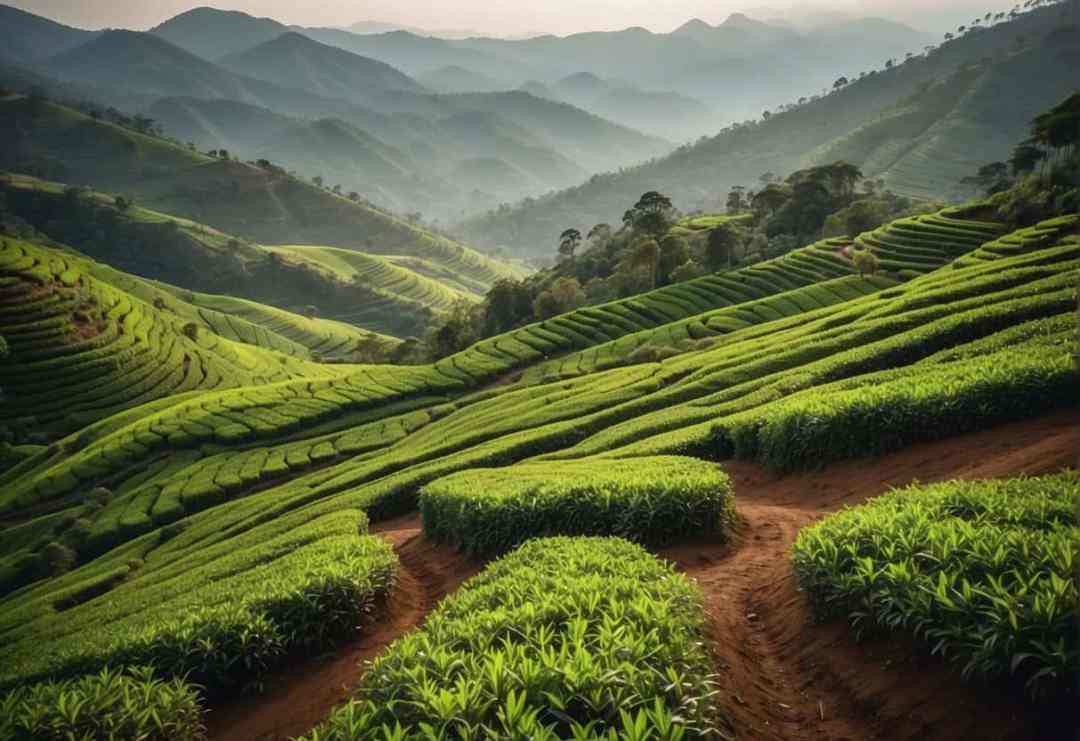
Exploring the tea trails of Sri Lanka is an immersive journey through the heart of the country’s tea-growing regions. It offers an up-close experience of the tea-making process from leaf to cup.
Planning Your Route
Travelers should be mindful of the varying climates and terrains when plotting a course through Sri Lanka’s tea trails. Here is a brief outline of a potential route:
- Nuwara Eliya: Known as ‘Little England’, this highland region offers cool climates and picturesque tea estates. Ideal for the start of the trail.
- Kandy: The cultural capital boasts mid-country tea plantations and offers a mix of historical sites with tea experiences.
- Ella: Popular for its stunning vistas, Ella provides challenging trekking paths intertwined with tea fields.
Maps and local guides are invaluable for finding the best routes and understanding the geographic nuances of each location.
Experiencing the Tea Trails: What to Expect
On the tea trails, one can anticipate a multifaceted sensory experience:
- Tea Estates and Factories: Visitors can witness the plucking of tea leaves and the precise process of withering, rolling, fermenting, drying, and sorting in the factories.
- Tasting Sessions: A highlight of any tour is the chance to taste various grades of tea and learn to distinguish the subtle differences in flavour and aroma.
Cultural interactions are also part of the journey, as travellers often encounter the warm hospitality of tea-workers and learn about local customs. The landscape offers a scenic backdrop for photographers and nature enthusiasts, with mist-wrapped mountains and rows of green tea bushes stretching into the horizon.
Cultural Significance of Sri Lanka Tea
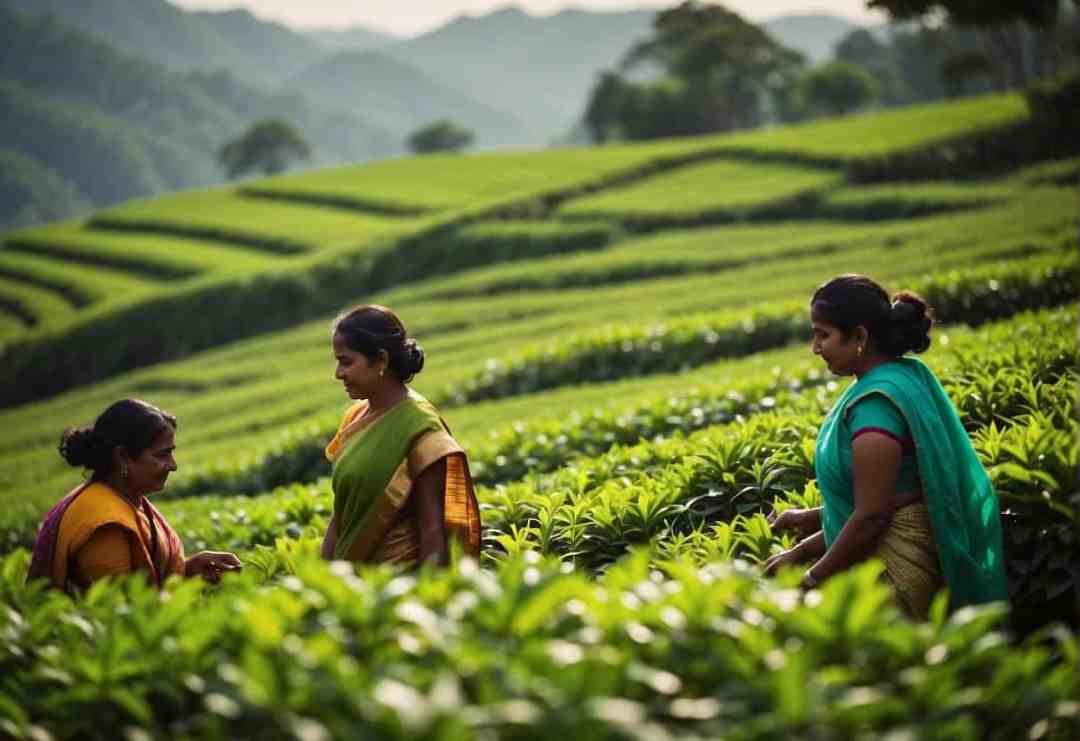
Tea is pivotal in Sri Lanka’s heritage and contributes significantly to its economy.
Sri Lankan Tea Tradition
Tea extends beyond mere consumption; it is deeply woven into the fabric of society. Sri Lankans traditionally serve tea to guests as a sign of hospitality, symbolizing warmth and welcome. Rituals and social gatherings are often incomplete without tea, making it a ubiquitous aspect of daily life. Sri Lanka Tea ceremonies, although not as elaborate as those in some other cultures, still hold a place in the social etiquette of Sri Lankans.
Tea Tourism and Economy
Tea Tourism has emerged as a strong economic driver for Sri Lanka. Visitors are often drawn to the picturesque tea plantations, where they can witness the tea-making process from leaf to cup. The tea sector also employs a significant portion of the population, both in plantations and in associated industries such as tea processing and packaging.
- Economic Impact: Tea exports are one of the country’s top sources of foreign exchange, making this sector crucial for Sri Lanka’s economy.
- Employment: The tea industry sustains numerous families, with plantations heavily reliant on the skilled labour of tea pluckers.
- GDP Contribution: Tea production and exports account for a substantial share of the nation’s GDP, showcasing its economic relevance.
Sri Lanka Tea Production Process
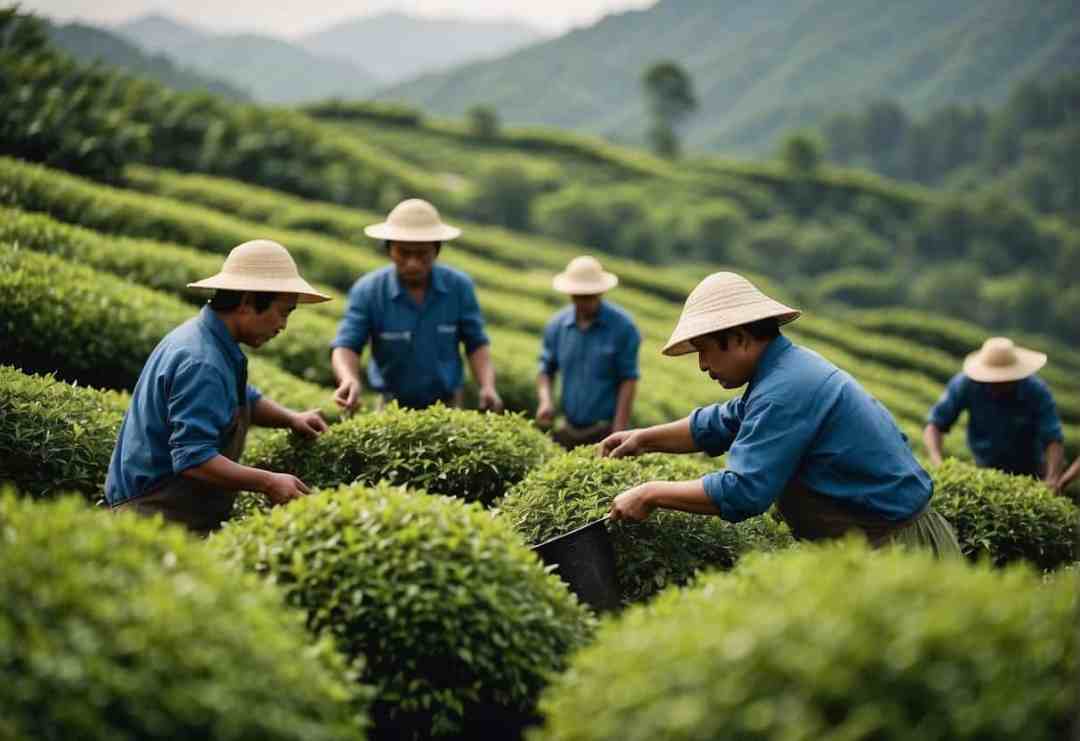
The tea production process in Sri Lanka is a meticulous journey that transforms the fresh leaves plucked from the verdant plantations into the world-renowned Ceylon tea. It involves specific techniques and careful handling at each stage to maintain quality and flavour.
Tea Plucking: The Art and Technique
Tea plucking is the initial, crucial stage where only the top two leaves and a bud, known as the “flush,” are handpicked by experienced workers. This selective harvesting ensures only the best quality leaves are used for production, and it typically follows a cycle of 7 to 14 days, depending on the growth rate.
Withering and Oxidation: Crafting the Flavor
After plucking, leaves are spread out on troughs and subjected to controlled airflow to reduce moisture content. Withering is critical as it makes the leaves pliable for further processing. Subsequently, the withered leaves undergo oxidation, rolling, and are exposed to air, developing the tea’s distinct colour and complex flavours.
- Degree of Oxidation:
- Green Tea: Minimal oxidation
- Oolong Tea: Partial oxidation
- Black Tea: Full oxidation
Drying, Sorting, and Packaging: Final Steps
Finally, the oxidized leaves are dried using industrial heaters to halt oxidation and lock in flavour. The resultant tea is then sorted into different grades using sieves and sorted based on leaf size. The highest grades are often whole leaves, whereas lower grades include broken leaves and fannings. Packaging is the last step, where tea is sealed in airtight containers to preserve its freshness until it reaches consumers.
Sustainable Practices in Sri Lanka Tea Production
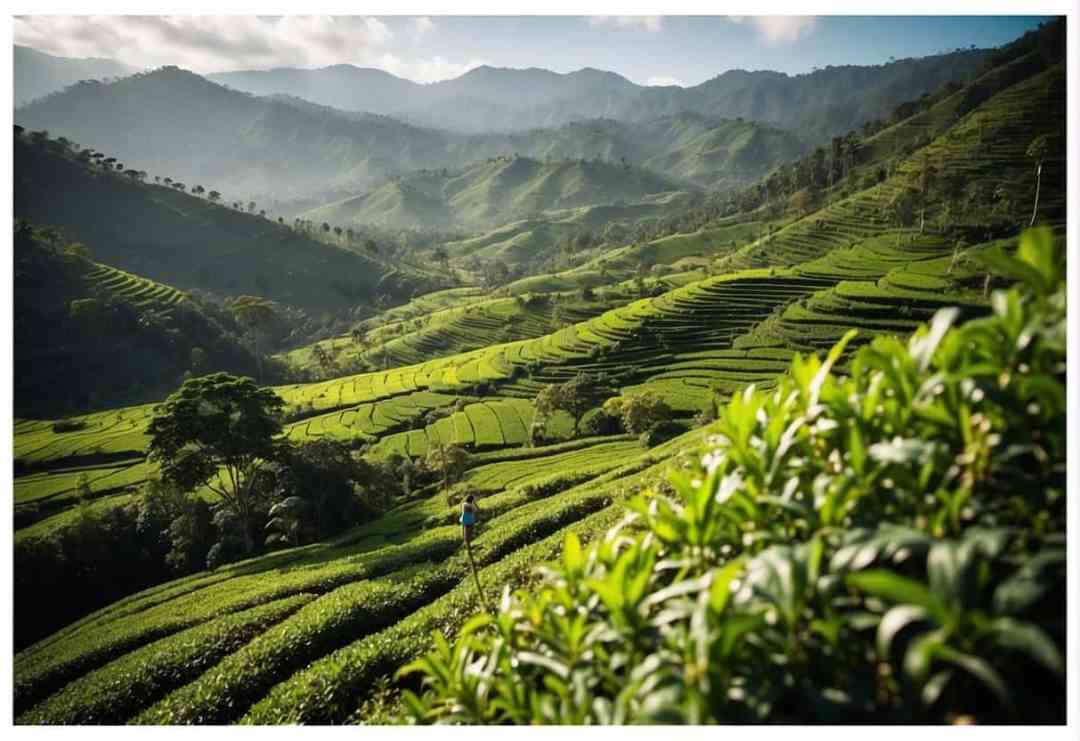
In Sri Lanka, tea producers increasingly adopt sustainable practices that mitigate environmental impact and support local communities.
Environmental Initiatives
Rainwater Harvesting: Many tea estates install systems to collect rainwater, reducing their reliance on natural water bodies and ensuring a sustainable water supply during dry seasons.
Bio-Fertilizers: Chemical fertilizers are being replaced by organic alternatives. Estates now frequently deploy compost and other bio-fertilizers, enhancing soil health without chemical runoff.
Community Welfare and Fair Trade
Supporting Education: Tea producers often allocate funds to build and sustain schools, ensuring access to education for their workers’ children.
Fair Trade Certification: A growing number of estates achieve fair trade certification, which mandates fair wages and working conditions. This exemplifies their commitment to the welfare of the workforce.
Enjoying Sri Lanka Tea

Sri Lanka offers a distinctive tea experience that elevates drinking tea into an art form, incorporating local traditions and flavours.
Brewing Techniques
In Sri Lanka, brewing tea is considered a ritual that honours the tea’s quality. The preferred method involves using fresh, cold water heated to a rolling boil. For black tea, the water temperature should be around 90-95°C (194-203°F). The steeping time is crucial; typically, Ceylon black tea should steep for about 3-5 minutes, depending on the desired strength. The correct technique ensures the tea’s robust flavour and aromatic qualities are fully expressed.
- Water Temperature: 90-95°C (194-203°F)
- Steeping Time: 3-5 minutes
Pairing Tea with Local Cuisine
Sri Lankan tea pairs exquisitely with the country’s rich and flavorful cuisine. Black teas, often bold and tannic, complement spicy dishes well. They counterbalance the heat and complexity of spices such as cinnamon, cardamom, and cloves, which are prominent in local dishes.
For a harmonious pairing, consider the following combinations:
- Mild Ceylon Tea with milk rice (Kiribath) and jaggery for a soothing breakfast.
- Strong Black Tea paired with spicy curry to cleanse the palate.
These pairings highlight the interplay between the tea’s boldness and the subtlety of Sri Lankan dishes, enhancing the overall gastronomic experience.
Conservation Efforts

Sri Lanka’s tea trails are integral to the nation’s heritage and ecology. Conservation efforts focus on protecting the unique biodiversity and ensuring sustainable, eco-friendly tourism practices.
Protecting Biodiversity
The vibrant ecosystem within Sri Lankan tea plantations is crucial for maintaining the ecological balance. Conservation projects aim to preserve these environments through various initiatives:
- Habitat Conservation: Establishing protected areas within plantations to safeguard native species.
- Agricultural Practices: Adopt organic farming and reduce the use of pesticides to minimize environmental impact.
Eco-friendly Tourism
Sustainable tourism development on the tea trails is pivotal in promoting conservation. The strategies implemented include:
- Waste Management: Proper disposal and recycling processes are in place to maintain the cleanliness of the environment.
- Energy Efficiency: Encouraging the use of renewable energy sources to power facilities, thereby reducing the carbon footprint.
Visiting Tea Estates

Exploring Sri Lanka’s tea estates offers an immersive experience into the world of Ceylon tea. Visitors can expect to find a variety of estates that cater to tourists with comprehensive services, including educational tours and exquisite tea-tasting sessions.
Estate Selection and Visitor Facilities
When selecting an estate to visit, travellers should consider the location and the amenities offered. Renowned estates like Pedro Estate in Nuwara Eliya and Labookellie Estate in the central highlands are recognized for their picturesque landscapes and visitor-friendly amenities. Facilities often include:
- Visitor Centers: Providing historical context and educational displays.
- Gift Shops: These are where guests can purchase estate-produced teas and souvenirs.
- Accommodation: Some estates offer bungalows or guesthouses for overnight stays.
Guided Tours and Sri Lanka Tea Tasting Experiences
Guided tours play a pivotal role in the visitor experience, with knowledgeable guides explaining the tea production process from leaf plucking to final packaging. Such tours typically culminate in a tea-tasting session, where guests can savour different varieties of estate tea. Here are the key aspects:
- Tour Duration: Ranges from 1 to 2 hours, varying by estate.
- Demonstrations: Hands-on experience in tea picking and processing.
- Tasting Sessions: Guided samplings of black, green, white, and oolong teas.
- Expert Insight: Guides offer flavour notes, cultivation, and history details.
Travel Tips and Recommendations
When planning a visit to the Tea Trails of Sri Lanka, travellers should consider the following tips to enhance their experience:
- Best Time to Visit: The ideal period for tea trail exploration is from January to April and mid-July to September. These months offer the most temperate climate, which is optimal for hiking and plantation tours.
- What to Wear: Comfort is key, so lightweight, breathable clothing is recommended. Sturdy footwear is also recommended for walks in the plantations. A hat and sunglasses are also advisable for sun protection.
- Health Precautions: Carry insect repellent to deter mosquitoes and ticks. It’s also prudent to have sunblock and to stay hydrated, especially while trekking.
- Accommodations: For an authentic experience, stay at one of the colonial bungalows or guesthouses close to the plantations. Booking in advance is highly recommended.
- Cultural Sensitivity: When visiting the plantations, greeting workers and asking permission before taking photographs is respectful.
Here’s a summary table for quick reference:
| Aspect | Recommendation |
|---|---|
| Best Time to Visit | Jan-Apr, mid-Jul to Sep |
| Clothing | Lightweight, breathable, sturdy footwear, hat, sunglasses |
| Health Precautions | Insect repellent, sunblock, water |
| Accommodations | Book colonial bungalows/guesthouses in advance |
| Cultural Sensitivity | Greet workers, ask for photo permission |
Partaking in a guided tour can provide a more comprehensive understanding of the tea-making process and local history. Engaging with a knowledgeable guide enriches the journey, ensuring visitors fully appreciate the art of Ceylon tea-making.
Photography and Documentation
Photography is a vital tool for documenting the tea trails of Sri Lanka. Visitors often come prepared with cameras, smartphones, and other devices to capture the mist-wrapped hills and vibrant greenery that define the region. Documentation takes various forms, from amateur snapshots to professional landscape photography.
- Amateur Photographers:
- Objective: To capture and share personal experiences.
- Equipment: Smartphones, compact cameras.
- Professional Photographers:
- Objective: To obtain high-quality images for commercial use, travel blogs, or exhibits.
- Equipment: DSLR cameras, tripods, and drones.
Ethical Considerations: Photographers must respect local workers’ and inhabitants’ privacy and traditions. They should always seek permission before taking photos of individuals, especially in rural communities where cultural sensitivities may be more pronounced.
Weather Implications: The area’s foggy conditions can challenge photographers. They should be prepared for sudden weather shifts that can offer dramatic lighting conditions and restrict visibility.
Best Practices:
- Golden Hour: Capturing the landscape during early morning or late afternoon when the light is soft and golden.
- Rule of Thirds: Composing photographs with subjects positioned along imaginary lines that divide the image into thirds, both horizontally and vertically.
Photography in the Tea Trails is not only about the aesthetic appeal but also about storytelling. Images can illustrate the intricate process of tea picking, the journey from leaf to cup, and the socioeconomic impact of tea production on the local communities.
Conclusion
Sri Lanka’s tea trails are an immersive experience for visitors. They offer a glimpse into the rich tapestry of tea production, from cultivation to cup. Tourists often find these trails educational and reflective of Sri Lanka’s cultural heritage.
The trails wind through various altitudes, showcasing diverse ecosystems and tea varieties. Travellers can witness the meticulous process of plucking tea leaves and the careful art of tea-making. Participating in these activities heightens appreciation for the revered beverage.
Here are key takeaways from exploring Sri Lanka’s tea trails:
- Heritage: The trails are steeped in the history of Ceylon tea.
- Scenery: The plantations provide breathtaking landscapes, with lush greenery and cool climes.
- Cultural Exchange: Visitors can interact with local tea pickers and factory workers.
Visitors leave with a richer understanding of Sri Lankan tea and the complexities involved in its production. This journey through the heart of Sri Lanka’s tea country is an educational and enriching experience that leaves a lasting impression.
Frequently Asked Questions: Sri Lanka Tea
Understanding the intricacies of the Tea Trails and the luxurious stays within can enhance the overall experience of your Sri Lankan adventure.
What are the unique features of the Ceylon Tea Trails experience?
The Ceylon Tea Trails experience is distinguished by its immersive offerings, including guided tours of tea plantations and the opportunity to learn about tea picking and processing. Guests can indulge in gourmet dining with tea-infused dishes, set against rolling green hills and tranquil trails.
How do the accommodations differ among the various bungalows within the Ceylon Tea Trails?
Each bungalow within the Ceylon Tea Trails boasts unique characteristics, ranging from colonial-era decor to modern amenities. They vary in size, view, and historical backgrounds, but all maintain a high standard of luxury, offering private gardens, butler service, and a sense of exclusivity.
What are some of the best tea plantation hotels in Sri Lanka?
Top tea plantation hotels in Sri Lanka include Heritance Tea Factory, Madulkelle Tea and Eco Lodge, and the Ceylon Tea Trails. These establishments blend luxury and local culture, providing spectacular views and direct engagement with the tea-making process.
Can you provide a price range for staying at Ceylon Tea Trails?
Prices for staying at Ceylon Tea Trails can vary widely depending on the season, type of accommodation, and length of stay, generally ranging from approximately $500 to over $1,000 per night. Inclusions such as all-inclusive dining and activities also influence the cost.
What is the historical significance of Sri Lanka’s tea plantations?
Sri Lanka’s tea plantations are historically significant. Established during the British colonial era, they transformed the country into one of the world’s leading tea exporters. The plantations are a testament to Sri Lanka’s cultural and economic transformation in the 19th and 20th centuries.
Which tea plantation in Sri Lanka is considered the most renowned, and for what reasons?
The Pedro Tea Estate in Nuwara Eliya is one of the most renowned tea plantations in Sri Lanka due to its high-quality tea production and picturesque landscapes. Its high elevation, favourable climate, and rich history contribute to its prestige and the exceptional quality of tea it produces.
